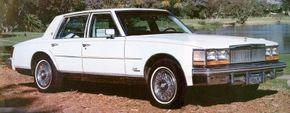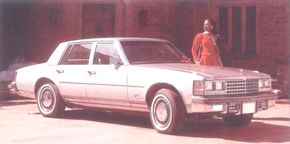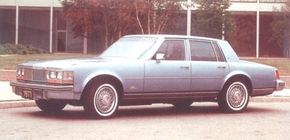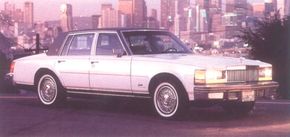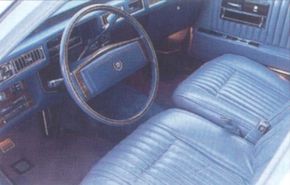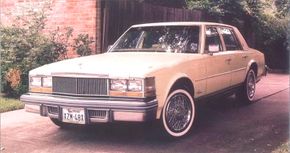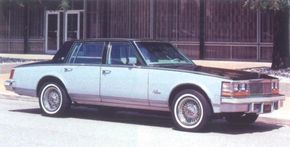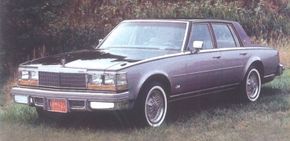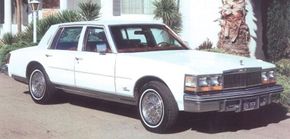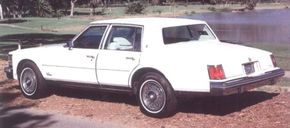The 1976-1979 Cadillac Seville introduced a new kind of luxury car. Bigger had always been better in the American luxury car market in which Cadillac flourished. But when a new breed of buyer began getting interested in smaller imported makes, GM's flagship steered a new course. Here is our introduction to the 1976-1979 Cadillac Seville.
The year 1975 won't likely go down in automotive history as "banner." The Mideast sheiks had recently turned off their oil taps; the U.S. economy entered rampant stagflation; safety and smog regulations loomed larger daily, as did bumper standards; Detroit saw sales drop, and now came the really serious invasion of small imports.
Advertisement
No new American cars appeared in 1975, except one. On April 22, Cadillac released the "international-sized" Seville as a 1976 model. Today, most of us don't think of this Seville as being all that significant, but it was. Historically, the Seville started several revolutions.
It legitimized downsizing for both the American public and U.S. automakers, and thus led to smaller, lighter cars (a trend that large SUVs seem to have reversed of late). For better or worse, the Seville also introduced the "sheer look," a styling format that car companies around the world promptly copied. In addition, this car launched computer analysis as applied to chassis and suspension development; introduced electronic fuel injection in the U.S.; and it took the audacious step of simultaneously becoming the smallest, nimblest, most fuel-efficient, and -- significantly -- the most expensive sedan in the Cadillac lineup.
Before the Seville, downsizing was a four-letter word to most Detroiters. Designers and engineers hated the very idea. Marketers weren't convinced that Americans would accept smaller, lighter cars (as indeed they had not in the case of the 1953 and 1962 Dodges and Plymouths). And the money moguls pointed out that downsizing would cost billions -- maybe more -- yet might well return nothing.
Courageous Ford, though, became the first major Detroit manufacturer to successfully downsize one of its car lines with the 1974 Mustang II, which was based on the Pinto subcompact. As it turned out, Ford's timing couldn't have been better. The downsized Mustang arrived in October 1973 -- just as the Mideast was shutting down America's gas pumps. Within months, fuel prices doubled and Mustang sales tripled. Meanwhile, Detroit dreadnoughts circled every filling station in the country, and dealers in Japanese autos suddenly became millionaires.
Yet, U.S. auto manufacturers still viewed downsizing as a gamble. And sneer though they might at the Pinto in a Mustang suit, GM leaders knew that Ford had done the right thing -- a very gutsy thing at that. GM didn't like it, but Ford had come up with a better idea not once but twice, first with the original mid-Sixties Mustang and now with this new downsized model.
On the next page, read about how GM dreamed up the downsized 1976 Seville.
For more information on cars, see:
- Classic Cars
- Muscle Cars
- Sports Cars
- Consumer Guide New Car Search
- Consumer Guide Used Car Search
Advertisement
